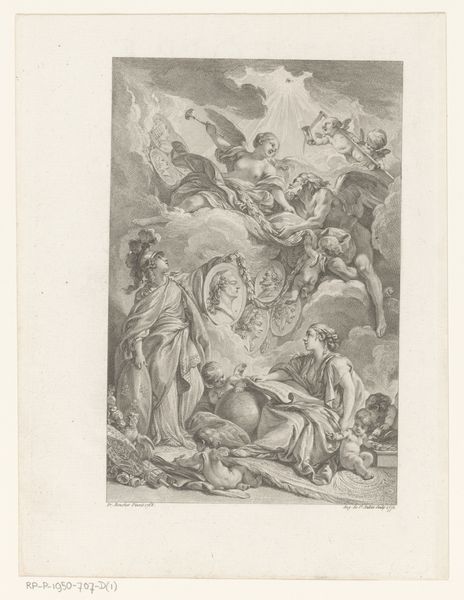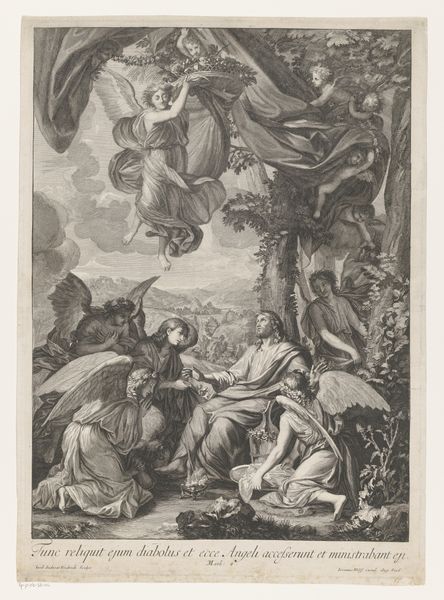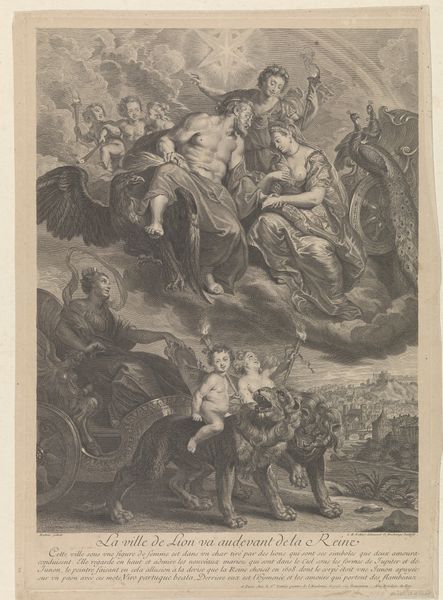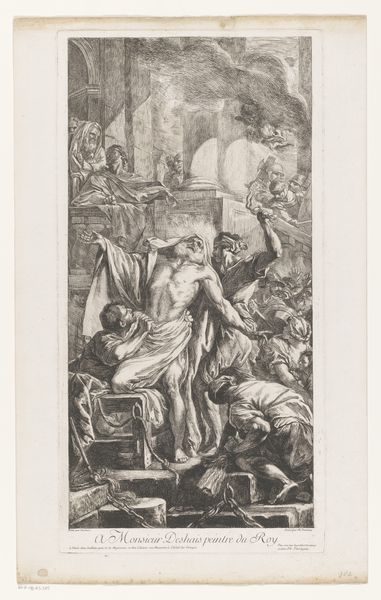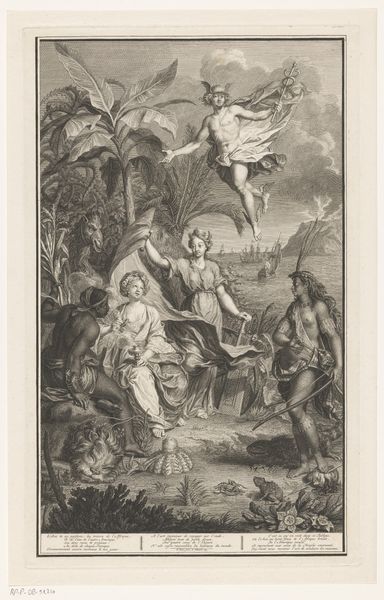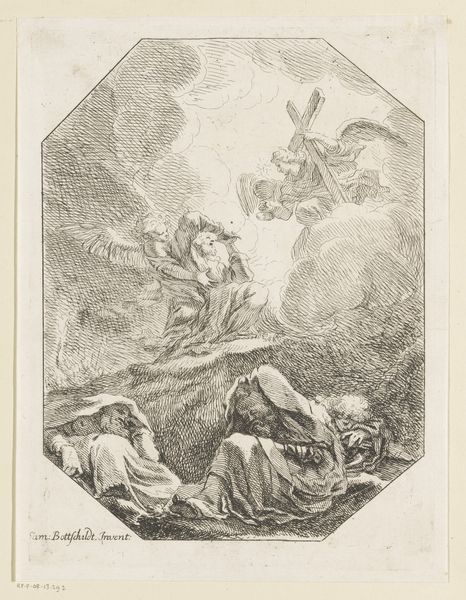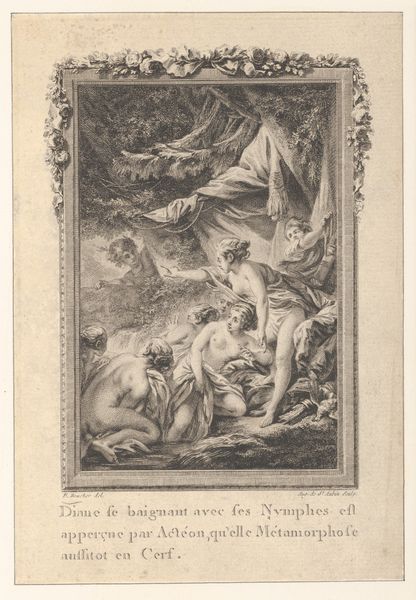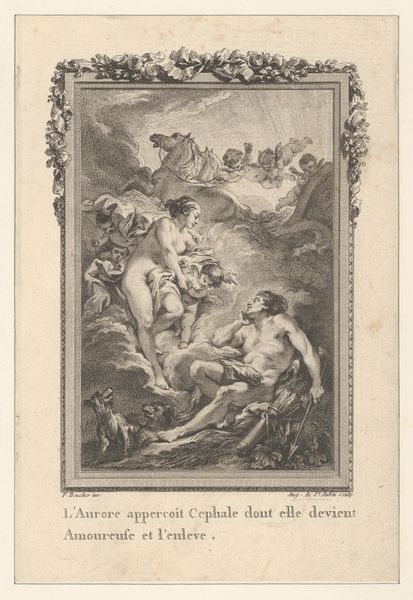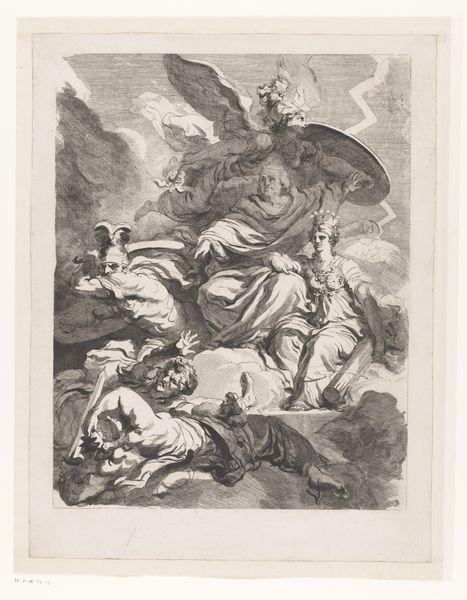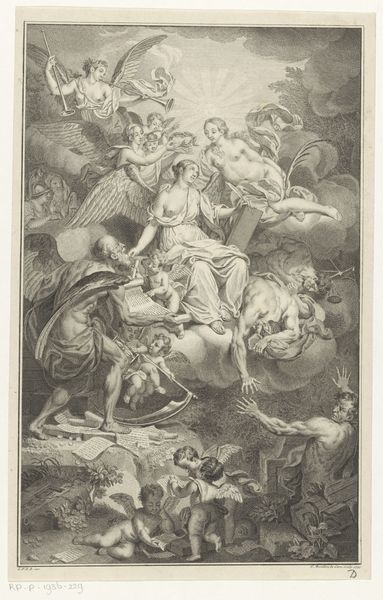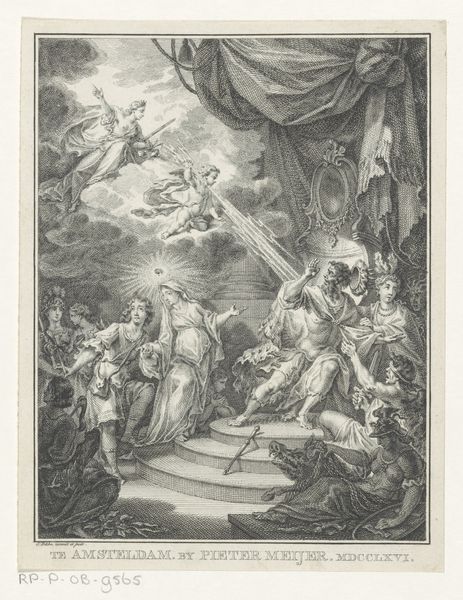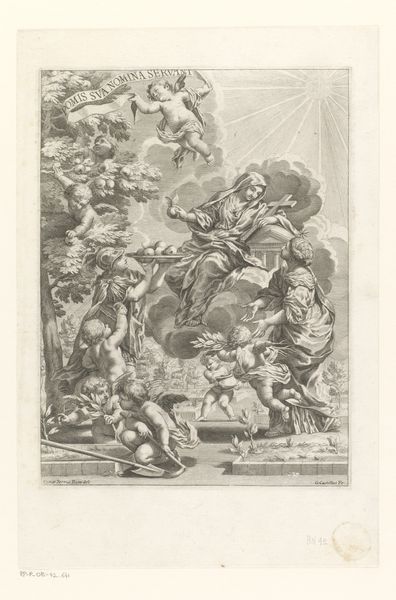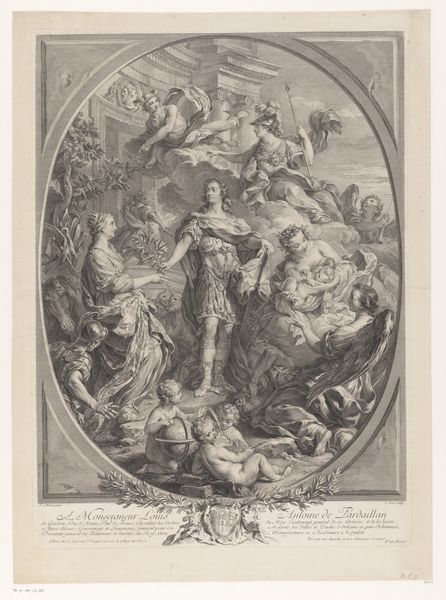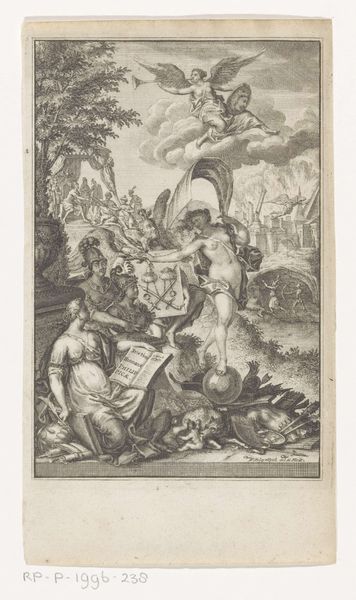
Dimensions: height 585 mm, width 297 mm
Copyright: Rijks Museum: Open Domain
This etching, "The Martyrdom of Saint Andrew," was created by Philippe Louis Parizeau in the late 18th century. It depicts the apostle Andrew during his crucifixion, an event that would resonate deeply within the religious context of its time. Made in France, a country with a strong Catholic tradition and a complex relationship with its monarchy, this image engages with ideas about religious authority and martyrdom. The reference to "peintre du Roy" suggests a connection to the royal court, raising questions about the politics of religious imagery in that period. Was this a self-consciously conservative image, meant to reinforce traditional hierarchies? Or did it engage in subtle critiques of power through its depiction of suffering? To understand this print better, we could examine church records, political pamphlets, and other visual representations of martyrdom from the era. The meaning of this artwork is contingent on the social and institutional forces that shaped its production and reception.
Comments
No comments
Be the first to comment and join the conversation on the ultimate creative platform.
